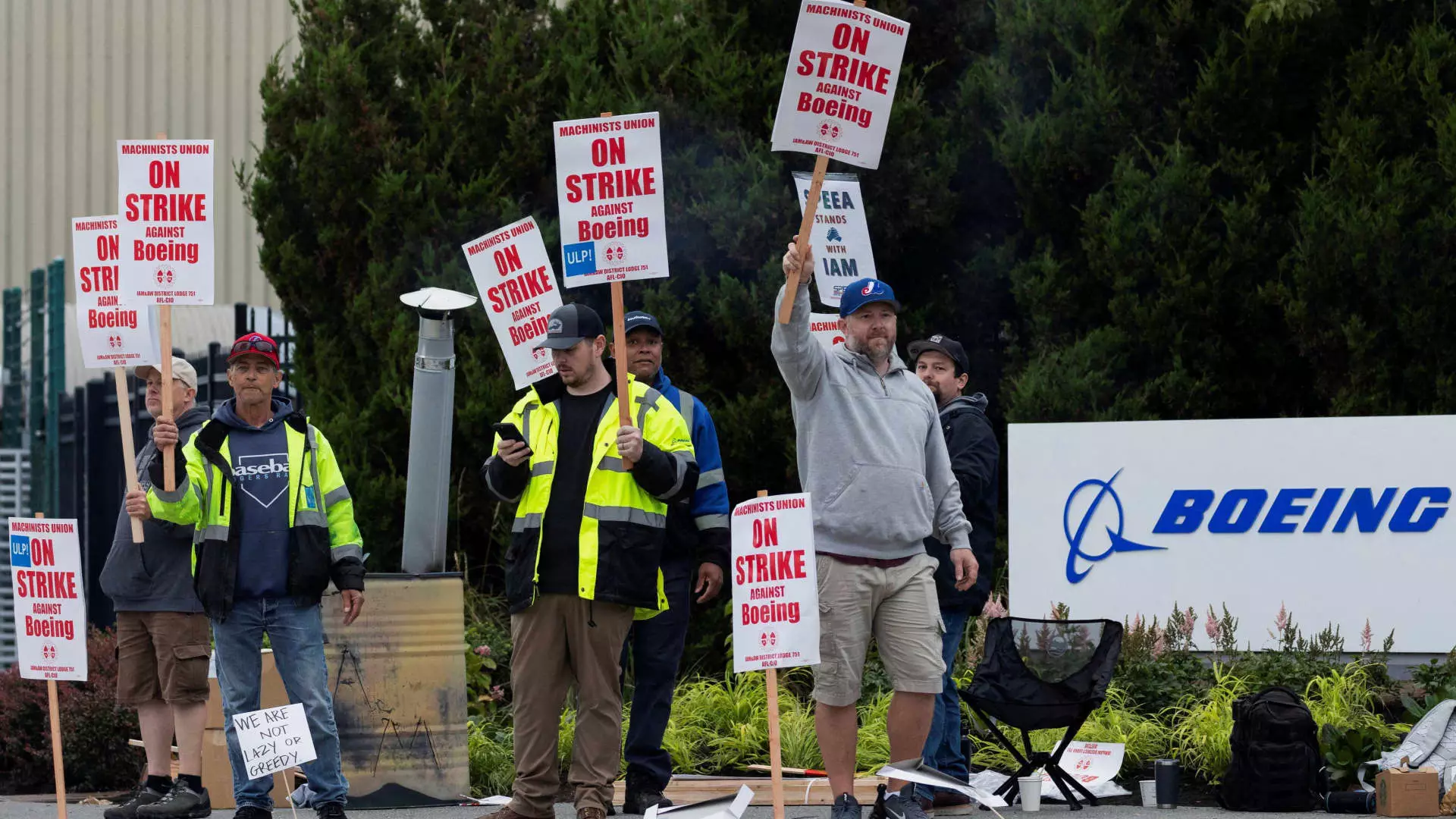In critical times for the aviation industry, Boeing finds itself grappling with a significant machinist strike that has entered its second week. The backdrop of this unrest is steeped in financial struggles, with Boeing’s debts soaring to an alarming $60 billion. As the largest aerospace manufacturer in the world, Boeing’s plight reflects a complex interplay between labor needs and corporate financial health, a dynamic that has become increasingly contentious over recent years.
Workers are demanding fair compensation amid mounting living costs in Washington state, where the median home price has skyrocketed by 142% over the last decade, leaving many machinists in precarious financial circumstances. With homeownership slipping out of reach, individuals like Jake Meyer, a Boeing mechanic, have resorted to side jobs just to make ends meet during the strike. The urgency and determination of these workers underscore a larger narrative about labor rights and economic disparity.
The Financial Impact on Boeing
The ramifications of the strike extend beyond the workers themselves and plunge deep into Boeing’s financial viability. Analysts estimate that the strike costs the company roughly $50 million each day. As the work stoppage hampers production, suppliers are also feeling the heat; orders are being paused, and the disruptions are cascading through Boeing’s vast network. The financial implications further compound a precarious situation for the company, which has struggled to post a profit since 2018.
This financial distress is exacerbated by a recent near-catastrophic event involving the 737 Max, which led to a massive loss of $8 billion this year alone. With the momentum of the strike potentially leading to a downgrade in credit ratings, Boeing’s fundraising ability could become even more constrained, making it harder for the company to navigate its existing $60 billion debt.
The workers involved in the strike, represented by the International Association of Machinists and Aerospace Workers District 751, have expressed frustration over what they perceive as inadequate compensation and benefits. Their collective contention centers on demands for wage increases that reflect the high cost of living and seek to restore pensions lost in prior agreements. The company’s latest offer of a 25% raise over four years has not resonated positively with the workforce, who are pushing for a more substantial 40% increase.
In conversations with striking workers, a common sentiment emerges: pride in their craft alongside the harsh realties of financial survival. Many have taken up side jobs while balancing their passion for building airplanes with the need to provide for their families. The sacrifice of personal comforts is palpable, as workers recount the lengths they have gone to save money while the strike lingers.
The Stakes for Boeing’s Leadership
Newly appointed CEO Kelly Ortberg finds himself in a precarious position, not only must he mend the rift with the machinists but also address the broader implications of the strike on Boeing’s sustainability as an industry leader. His administration’s recent measures—including temporary furloughs and cost-cutting initiatives—reflect the urgency of navigating an uncertain market. However, these strategies may also alienate the very workforce that is crucial to the company’s recovery.
Union leaders have criticized the stagnation in negotiations, stressing that Boeing needs to demonstrate tangible commitment to addressing the workers’ primary concerns. Ortberg’s recent communications suggest a recognition of the urgent need for a resolution, yet action remains to be seen. The negotiation table appears to be at an impasse, heightening tensions between the corporation and its employees.
Boeing’s strike is not an isolated incident; rather, it is part of a broader wave of labor unrest across various sectors, including the auto industry and entertainment. Workers across the nation are increasingly asserting their rights, seeking better compensation and work conditions in light of current inflationary pressures and economic uncertainty. The Biden administration has signaled its support for negotiations, emphasizing the need for a resolution favorable to workers while ensuring corporate health.
In an increasingly tight labor market, characterized by a shortage of skilled workers, Boeing faces a daunting challenge. The lessons learned from previous strikes suggest that not only can prolonged labor disputes harm immediate production capabilities, but they can also jeopardize talent retention and recruitment for future endeavors.
The ongoing machinists’ strike at Boeing highlights a critical juncture in labor relations and the corporate landscape. As both sides navigate their respective needs—economic survival for the workers and financial stability for the corporation—the outcome of this strike will serve as a bellwether for labor movements nationwide. The challenge ahead will determine whether Boeing can emerge from this labor conflict with a revitalized workforce and renewed commitment to sustainable practices in a rapidly changing market.


Leave a Reply